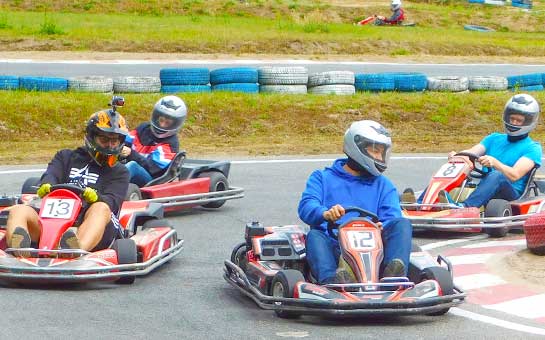Ready, set, go-kart! You fell in love with it when you were a child. As a teen, you loved it even more. And as an adult…you still haven’t stopped loving it. Go-karting presents the opportunity to drive the way you can’t in a real car on a track. Sometimes it feels like a miniature Formula One race. Go-karting can definitely get your adrenaline pumping.
But just because you’re driving under controlled conditions doesn’t mean there is no risk of danger whatsoever. Go-karting accidents still have consequences and can result in serious injuries. That’s why, if you’re going go-karting on vacation, you should make sure to purchase travel insurance for go-karting.
Travel Insurance for Go-Karting
Getting a travel insurance plan for go-karting is important. Most standard travel insurance policies don’t offer coverage for extreme sports like go-karting. Before you leave on vacation, read your plan’s fine print to determine whether or not you’re covered. If not, then you will need to get a go-karting travel insurance plan so the only thing you have to worry about is crossing the finish line.
Introduction to Go-Karting
Go-karting is a well-known activity among racing enthusiasts and children’s birthday party attendees alike. Recreational go-kart tracks have long been a staple of amusement parks and vacation areas, as they’re fun for the whole family.
Most rental recreational go-karts are powered by small single-cylinder engines of up to around 200cc, similar to the type of engines you may see on a lawn mower. However, these karts can still be quite quick, often hitting up to 50mph on outdoor tracks, or over 30mph on indoor tracks. Electric go-karts are becoming increasingly popular as well, and they can be just as fast. Therefore, it is extremely important that you follow all track rules when driving, and utilize all the mandated safety equipment.
Most recreational go-karts are available to rent for a certain number of laps around the track, or for an unlimited number or laps within a certain time period. The more you pay, the more you can drive. Standalone go-kart tracks and amusement park tracks will usually provide all the safety equipment you need such as a helmet and seatbelt.
Though go-karts typically have bumpers surrounding them to minimize the effects of small crashes and bumps with other karts, you should still take care to go slowly at first until you’ve familiarized yourself with the way the kart handles. If you feel that anything on your kart is broken or working improperly, pull over and inform a staff member immediately. These karts are used heavily, and parts breakages can happen.
Risks of Go-Karting
The major injury concerns surrounding go-karts are bone fractures, head trauma, burns and road rash, and whiplash. Due to the intuitiveness of go-karting, hitting a turn hard can result in a spin-out. The faster you’re going, the more dangerous the spin: Not only will you have lost control of the kart, but you can also hit the safety barrier or another kart. And the harder you hit, the better the chance of injury.
Injuries can also happen when two karts collide with each other on the track. These collisions can lead to neck strains, whiplash, or even fractures. These injuries can happen to almost anyone, regardless of their level of experience. You could easily get injured because of another driver’s mistake. This relative lack of control is why purchasing adequate go-karting travel insurance is so important.
Go-karting insurance will help cover the costs of any medical treatment you might require. Peace of mind and financial security are worth a few extra dollars, and it leaves you free to invest your time and mental effort in recovery.
